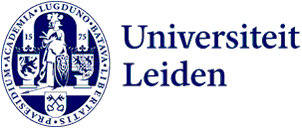
Quiet brake on war: this intelligence expert points to arms control agreements that work
At the start of his PhD, intelligence analyst William Lippert didn’t yet know what to expect. Little had been written on the subject. Three years later, he is sure: conventional arms control agreements promote peace.
The American-Irish-Vietnamese researcher William Lippert already had a full career behind him - 25 years as an intelligence analyst at Interpol and the US Department of Defense - before turning to academic research in The Hague.
His long experience in analysing, writing and processing complex information is proving invaluable in a field that few people have studied in depth.
How did you come to this topic? It’s quite specific.
‘It really started in my youth. When I was about fifteen, I read Red Storm Rising by Tom Clancy, about a hypothetical Third World War in Europe. The book made a huge impression. Later I became fascinated by strategy computer games in which you could replay the contest between NATO and the Warsaw Pact. From that grew the question: if a war had broken out then, who would have won?’
And that led to your PhD?
‘Yes. I wanted to know how you could approach that question scientifically. I eventually arrived at arms control: the idea that by studying military balances and agreements you can understand how countries try to prevent one party from being able to win — and thus prevent war altogether. My research focuses on conventional agreements between rivals that reduce the likelihood of war and create stability. They differ from universal arms control — such as the ban on chemical weapons — and from non-proliferation treaties on nuclear weapons.’
What makes your research unique within the field?
‘I developed a dataset of dozens of arms control agreements and conflicts since 1918. Many studies look at a single treaty or a single war, but I compared a range of cases: from the limitations after the First World War to the Minsk agreements of 2015. That allowed me to identify patterns in how rivals interact. The common feature of successful agreements is this: if neither side may arm strategic areas, there’s no reason to attack them.
At the start I myself only knew the CFE Treaty, and I discovered there are many more effective forms of arms control than is often assumed. The title of my thesis, The quest for peace, only emerged at the end.’
So arms control does work.
‘Certainly. The picture is often too gloomy. Many people think conventional arms control - especially between NATO and Russia - no longer functions. But there are still agreements being observed: look at Svalbard, the Åland Islands and the Turkish Straits. We hear little about them precisely because they work; only when they are violated do they make the news.’
You stress that arms control is often not a choice. What do you mean?
‘In Europe almost every conflict ends with some form of limitation: demilitarised zones, buffer zones or mutual caps. After the First World War the border between Bulgaria, Turkey and Greece was demilitarised. And despite both being NATO members, Greece and Turkey still have agreements that certain islands may not be militarised. Such mechanisms are stabilising, even if they attract little attention.’
'Russia might have found the military balance acceptable and not invaded Ukraine'
What does all this mean for the war in Ukraine?
‘Policymakers need to be thinking now about how the war ends and what forms of conventional arms control are possible afterwards. In the past, wars sometimes ended sooner than expected, leaving people unprepared for negotiations. If you focus only on winning, you forget that preserving peace is at least as important.’
You call the current situation in Europe 'unprecedented'. Why?
‘Because we now have a war in which a European great power (Russia) is fighting a non-great power (Ukraine), while other great powers — the US and EU member states — substantially support the defender. Earlier European wars were either between great powers or between smaller states. That’s why classical models only partially fit. We will probably end up with a set of agreements rather than one big treaty.’
So you argue that the failure of conventional arms control contributed to this war.
‘My theory is that if conventional arms control in Europe had functioned better and been supplemented with new arrangements, Russia might have found the military balance acceptable and had fewer incentives to invade Ukraine.’
Which lesser-known agreements stood out in the dataset?
‘The Turkish Straits are notable. Turkey is a NATO member but enforces a treaty that applies to all parties — and does so consistently, even now. Another example is the Good Friday Agreement of 1998. It imposes practical constraints on British security forces in Northern Ireland and even created international implementation bodies. Methodologically it ticks all the boxes of conventional arms control, though almost no one labels it as such.’
Do you see a common thread?
‘Yes: enormous variation in form and timing, but one goal — to make peace or keep it. In the literature that core is often buried under technicalities and numbers. Conventional arms control isn’t a luxury; it’s a tool for removing incentives for war.’
What is the main conclusion?
‘Even in tense times there are still agreements that work. They are often invisible, but they prevent escalation. Ultimately arms control is not about counting tanks or saving money, but about seeking equilibrium — and with it, peace.’
